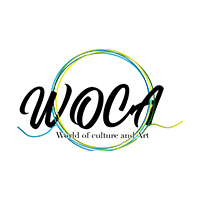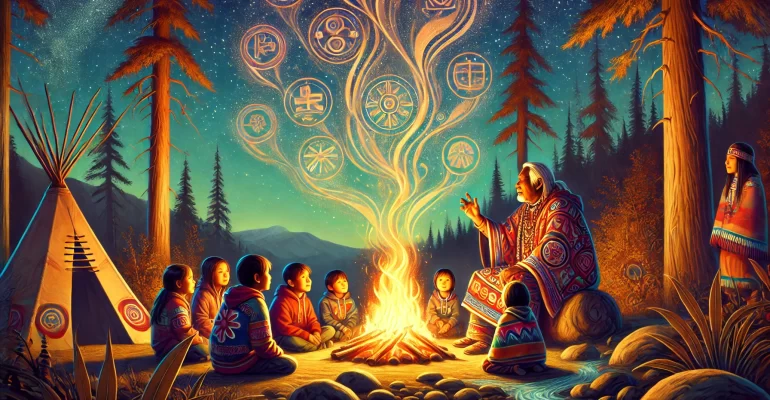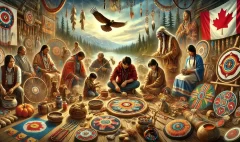Words of Wisdom: The Magic of Indigenous Storytelling and Languages in Canada
Words of Wisdom: The Magic of Indigenous Storytelling and Languages in Canada
Hello, story lovers and language enthusiasts! Today, we’re going on an amazing journey into the world of Indigenous storytelling and languages in Canada. Get ready to discover tales as old as the mountains and words that carry the wisdom of generations. It’s like we’re about to open a treasure chest filled with stories and sounds from all across this beautiful land. Let’s dive in!
The Power of Stories: More Than Just Words
Imagine a world where stories aren’t just for bedtime, but are the key to understanding everything around you. That’s how it is for many Indigenous Peoples in Canada. Their stories are like magic books that teach about nature, history, and how to live a good life.
“Our stories are our teachers,” says Elder Mary Skyfeather of the Cree Nation. “They tell us where we come from, who we are, and how we should treat the world around us. Every time we tell a story, we’re passing on important lessons to the next generation.”
Stories That Come Alive
What’s super cool about Indigenous storytelling is that it’s not just about sitting and listening. Many stories come alive through:
- Dance: Performers might act out parts of the story with special moves.
- Song: Some stories are sung, with melodies that have been passed down for hundreds of years.
- Art: Pictures, carvings, and even clothing can tell parts of a story.
- Ceremonies: Some stories are so important that they’re part of special events.
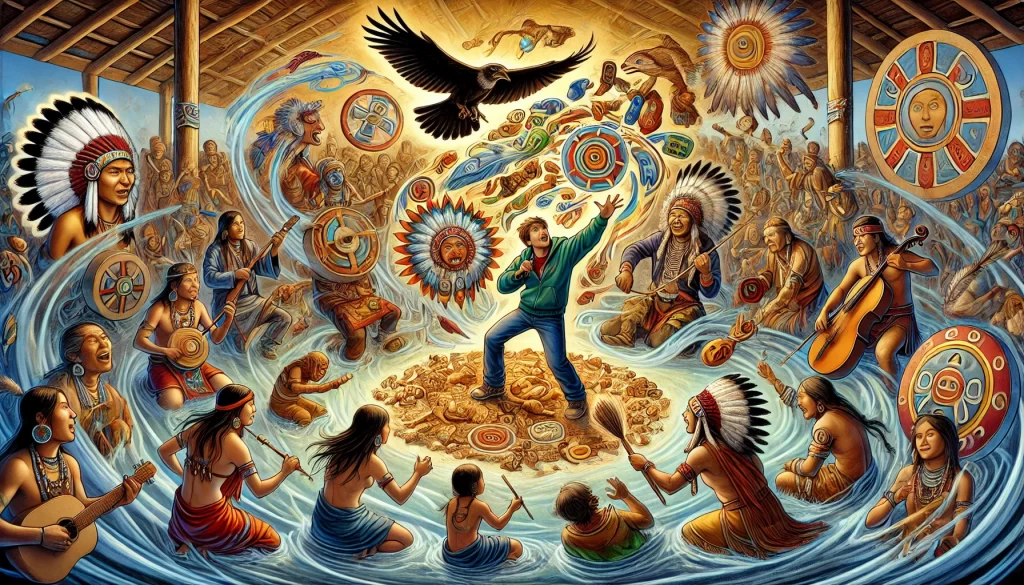
“When we tell a story, we use our whole body and spirit,” explains Jake Thundervoice, a young Anishinaabe storyteller. “It’s like the story jumps out of our mouths and dances in the air!”
A World of Languages: Many Voices, One Land
Did you know that in Canada, there are over 70 Indigenous languages? That’s right – it’s like having 70 different ways to say “hello” or “thank you”! Each language is special because it carries unique ways of looking at the world.
Here are some fun facts about Indigenous languages in Canada:
- The Inuit languages have many words for snow – sometimes over 50! This helps describe exactly what kind of snow they’re talking about.
- Some languages, like Mohawk, don’t have any words for “goodbye”. Instead, they might say something like “I will see you again”.
- Many Indigenous languages are verb-based, which means they focus on actions and relationships rather than things.
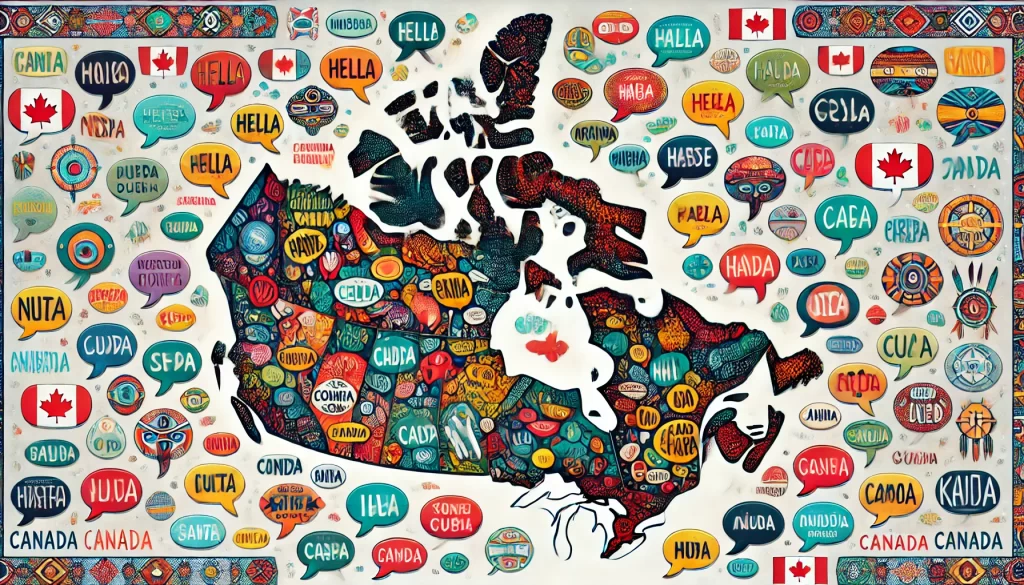
“Our languages are like windows into how our ancestors saw the world,” says Dr. Lila Bearspirit, an Indigenous language teacher. “When we speak our language, we’re thinking in the same way our great-great-grandparents did!”
Language in Art and Craft of Indigenous Storytelling and Languages in Canada
Indigenous languages play a big role in art and crafts too. Many artists use words or syllabics (special writing systems) in their work:
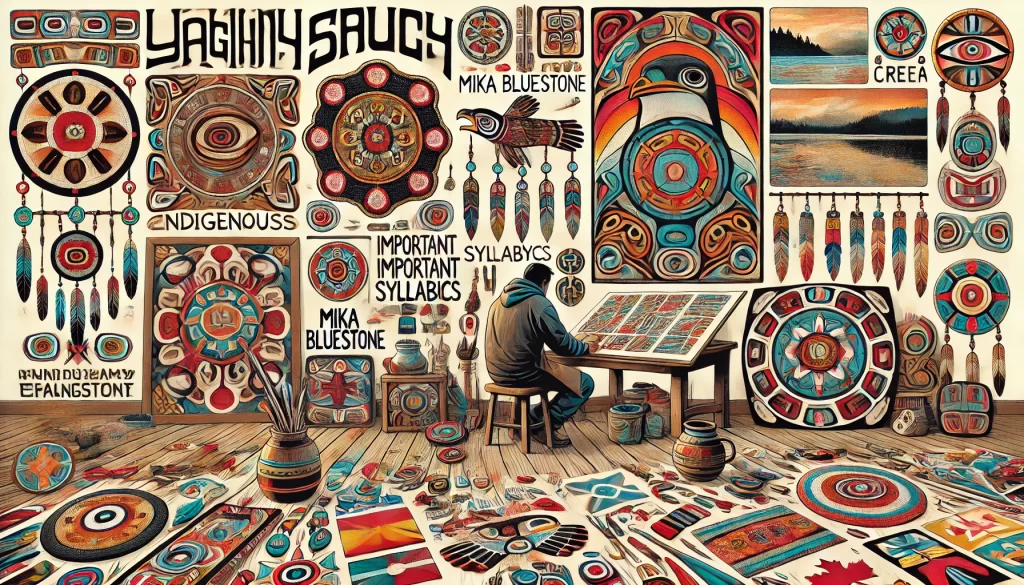
– Beadwork might spell out words in an Indigenous language.
– Paintings often include important words or phrases.
– Some artists create beautiful designs just using written language.
“Adding our language to our art is like adding a secret message,” shares Mika Bluestone, a Haida artist. “It’s a way to keep our words alive and beautiful.”
Oral Traditions: Keeping History Alive with Words
For many Indigenous Peoples, the most important history books aren’t written down – they’re spoken out loud and remembered. This is called oral tradition, and it’s a super important way of passing down knowledge.
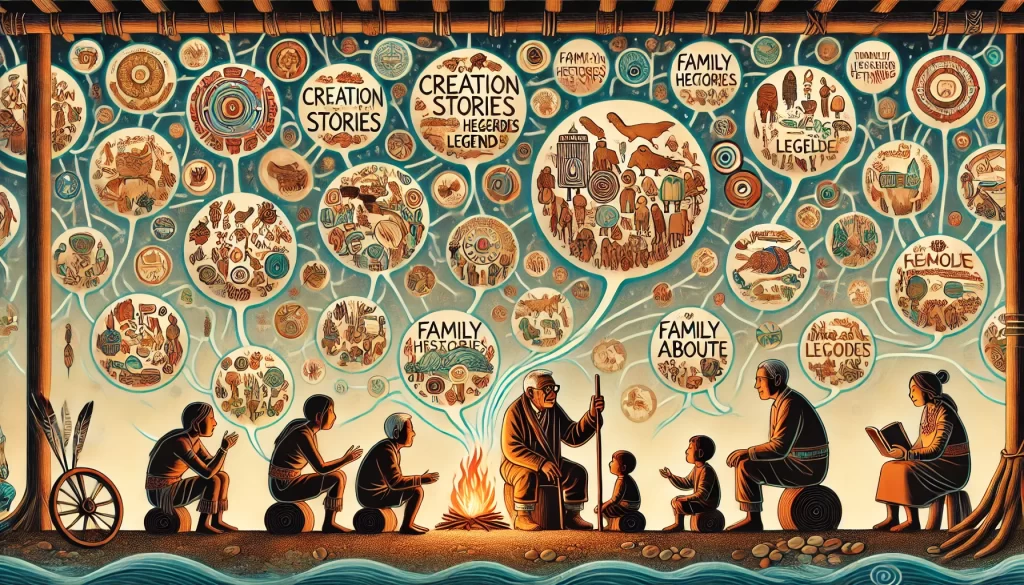
Oral traditions can include:
- Creation stories: Tales about how the world began.
- Family histories: Stories about ancestors and important events.
- Legends: Exciting tales that often teach moral lessons.
- Knowledge about the land: Information about plants, animals, and how to live on the land.
“Our stories are like a living library,” explains Elder Tom Ravenwing. “Each person who learns and shares these stories is like a book, keeping our history safe for the future.”
Storytelling Through Seasons
Many Indigenous stories change with the seasons. This helps people remember when to tell certain stories and why they’re important:
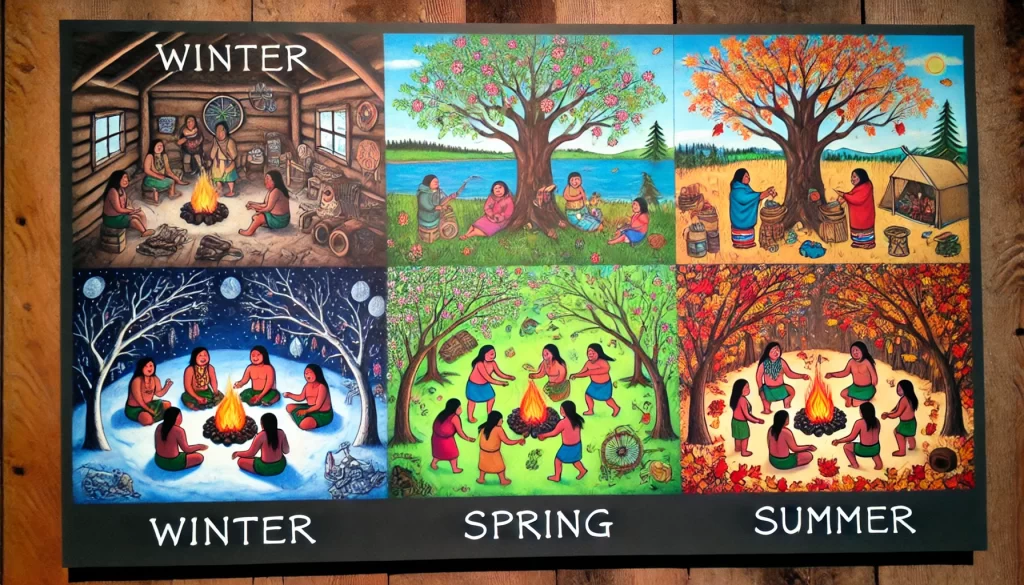
– Winter might be for long, detailed stories since people spend more time indoors.
– Spring could bring stories about renewal and growth.
– Summer might have stories about traveling and adventures.
– Fall could focus on harvest tales and preparing for winter.
“The land tells us what stories to share,” says Sarah Morningstar, an Ojibwe storyteller. “We listen to the world around us, and it guides our words.”
Keeping Languages Strong: A Big Challenge
Sadly, many Indigenous languages in Canada are in danger of disappearing. This is because of things like:
- Residential schools that forbade children from speaking their languages.
- Fewer young people learning the languages.
- The strong influence of English and French in daily life.
But there’s good news! Many Indigenous communities are working hard to keep their languages alive and growing.
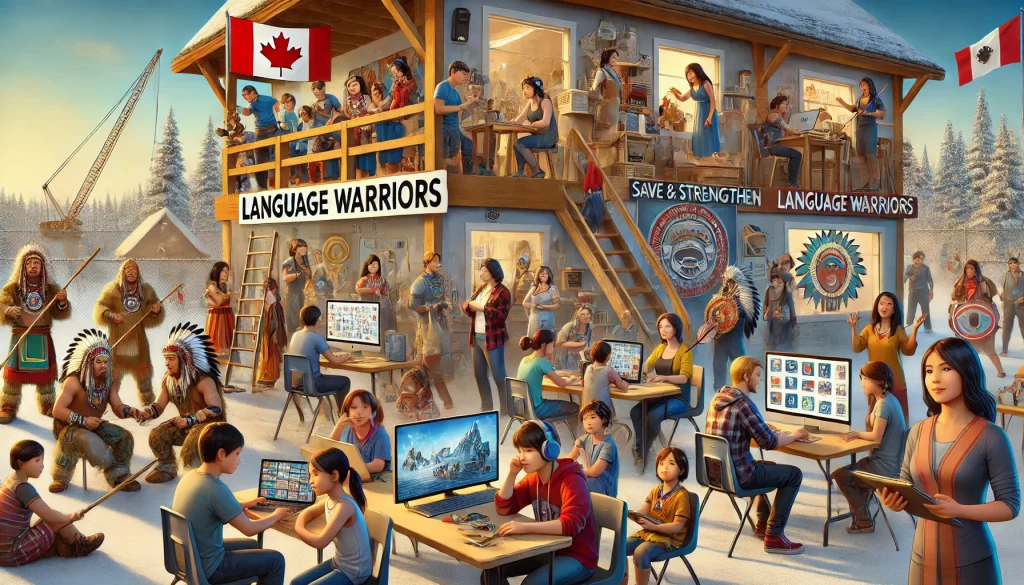
Language Warriors: Heroes of Words
All across Canada, there are people working to save and strengthen Indigenous languages. These “language warriors” are doing amazing things:
- Creating language nests: Special daycares where kids learn in Indigenous languages.
- Making apps and video games in Indigenous languages.
- Writing books and making movies in Indigenous languages.
- Teaching language classes for all ages.
“Every word we learn and share is like planting a seed,” says Mike Eagleheart, a Michif language teacher. “Together, we’re growing a forest of language that will last for generations!”
Stories for Everyone: Sharing Across Cultures
Indigenous stories and languages aren’t just for Indigenous people – they’re treasures for everyone to learn from and enjoy. Many Indigenous storytellers and language experts are sharing their knowledge with people from all backgrounds.
Here are some cool ways people are sharing:
- Storytelling festivals where people can hear tales from many nations.
- Books that share Indigenous stories for kids and adults.
- Podcasts in Indigenous languages with English translations.
- University courses on Indigenous languages and storytelling.
“When we share our stories and languages, we’re building bridges between cultures,” explains Dr. Robert Wolfrunner, an Indigenous studies professor. “It helps everyone understand each other better and see the world in new ways.”
Fun Activities to Try: explore the world of Indigenous storytelling and languages
Want to explore the world of Indigenous storytelling and languages? Here are some fun things you can do:
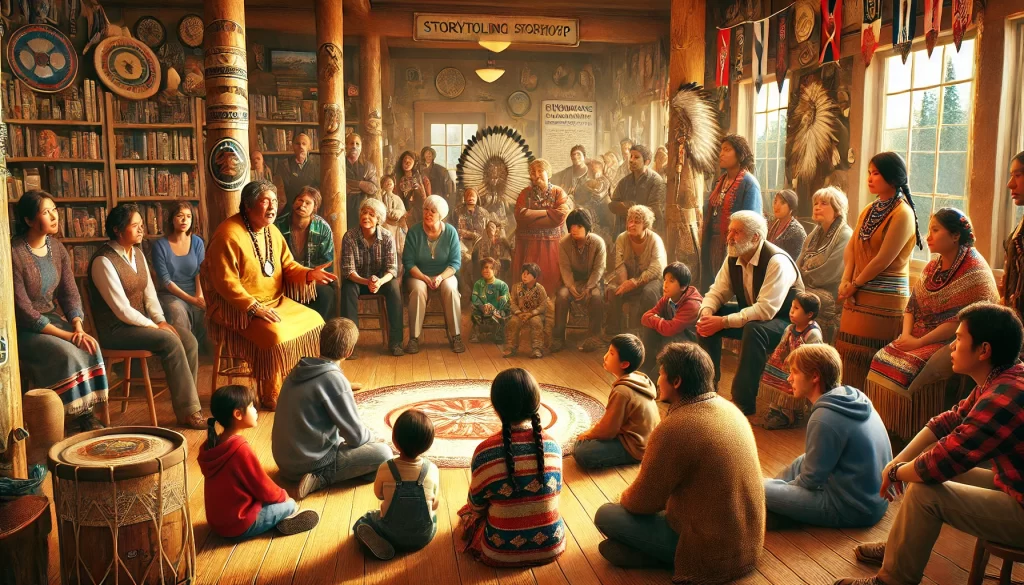
- Learn to say “hello” in an Indigenous language from your area.
- Listen to an Indigenous story podcast or audiobook.
- Try to tell a story without using any words – use only gestures and sounds!
- Create a picture that tells a story about your family or community.
- Visit a local Indigenous cultural center to hear stories in person.
- Make up a story about an animal that lives near you, in the style of an Indigenous legend.
- Write a poem using some words from an Indigenous language (with respect and permission).
- Attend a public storytelling event in your community.
Wrapping Up:
As we come to the end of our journey through the wonderful world of Indigenous storytelling and languages in Canada, let’s remember the big ideas we’ve learned:
- Stories are powerful teachers that carry important wisdom.
- Indigenous languages show unique ways of seeing the world.
- Oral traditions keep history alive through spoken words.
- Preserving languages is a big challenge, but people are working hard to keep them strong.
- Sharing stories and languages helps build understanding between all people.
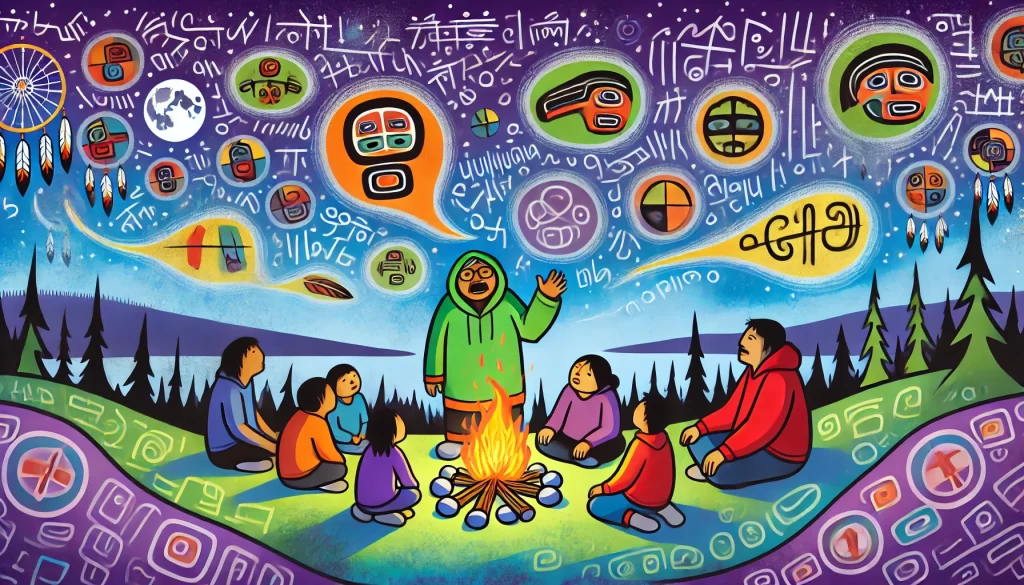
The amazing thing about stories and languages is that they’re always growing and changing. Every time someone tells a story or speaks in their language, they’re adding to a tradition that’s thousands of years old. It’s like being part of the longest, most exciting story ever told! So, the next time you hear an Indigenous word or story, remember that you’re listening to something really special. It’s a chance to learn, to understand, and to see the world in a whole new way.
Now it’s your turn! Do you have a favorite story from your family or culture? Have you ever tried to learn words in an Indigenous language? Share your thoughts and experiences in the comments below. Let’s keep the conversation going and create our own story of learning and sharing together!
